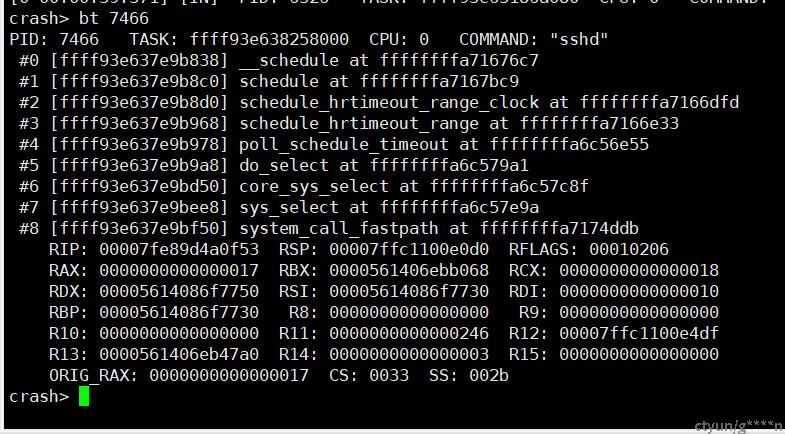1. 解释load averrage
system load avg over the last 1, 5 and 15 minutes
(参考 top(1) - Linux manual page (man7.org))
满载时,并不是1, 而是逻辑cpu的个数. 即2cpu的PC,最大值是2.
(参考 uptime(1) - Linux manual page (man7.org))
System load averages is the average number of processes that are
either in a runnable or uninterruptable state. A process in a
runnable state is either using the CPU or waiting to use the CPU.
A process in uninterruptable state is waiting for some I/O
access, eg waiting for disk. The averages are taken over the
three time intervals. Load averages are not normalized for the
number of CPUs in a system, so a load average of 1 means a single
CPU system is loaded all the time while on a 4 CPU system it
means it was idle 75% of the time.

2.分析
该参数统计有两个process状态. 运行中,不可中断睡眠.
2.1 crash
查看内核线程状态的方法,命令
crash(需要安装, 并且需要一些依赖包,)
yum install crash执行crash命令,还需要依赖内核符号表
kernel-debuginfo-3.10.0-957.el7.x86_64.rpm
kernel-debuginfo-common-x86_64-3.10.0-957.el7.x86_64.rpm
查看是否是自己开发的驱动造成 ,thread长期处于RU UN状态.
2.2 bt thread_id
并且分析RU UN的运行位置

3.sleep造成的UN(不可中断性睡眠状态)
(这里不讨论RU状态的解决方法,可能需要优化驱动运行流程.)
如果bt分析到stack在msleep()内部.
内核函数, 注意这里不是用户空间的sleep函数.
msleep(10);驱动中直接调用msleep函数,会造成线程处理UN状态,造成load average升高.
如果内核线程需要长期sleep,偶尔处理一个操作,那么会造成该cpu的load average直接逼近1.
while(1)
{
msleep(10)
//todo something little
}但是其实该CPU并没有进行什么繁重的操作. 会误导用户.
4. 解决方法
应该在驱动中尽量避免使用sleep,采用另外的逻辑来处理
4.1. 采用等待队列唤醒
wait_queue_head_t event;
init_waitqueue_head(&event);
wait_event_interruptible(event, kthread_should_stop() || !queue_empty(bq));
wake_up(&event);
4.2.实在要使用睡眠,可采用可中断的睡眠函数
msleep_interruptible(2000);其缺点是可能被别的信号唤醒,造成睡眠时间不足预期. 不过应该很少遇到.
(参考 delays - Information on the various kernel delay / sleep mechanisms — The Linux Kernel documentation)
4.3.使用内核定时器
(未实验)
#include <linux/timer.h>
5.总结
驱动中造成cpu load average高的原因之一是,长期使用内核函数 msleep(). 避免的办法是不应该在长时段等待中使用不可中断睡眠.